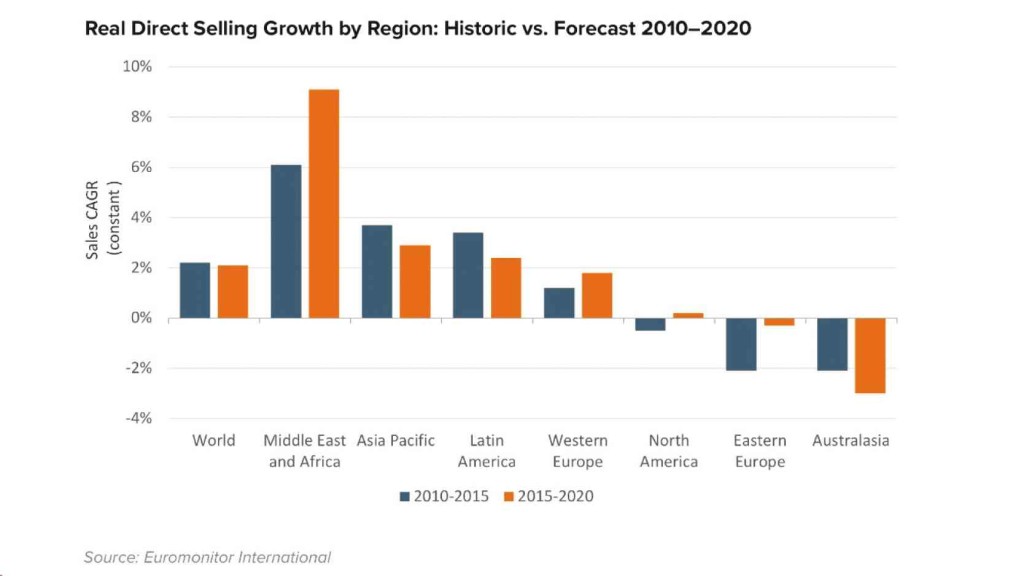“The internet is not a harbinger of doom for direct selling.”
That is the good news that global research firm Euromonitor International brings to those in the direct selling industry, especially those who fear that they may lose customers with the rising popularity—and convenience—of online shopping.
In its recent report titled “Direct Selling and Communities in the Internet Age,” Euromonitor reveals that because the direct selling business model has a “personable nature,” the worldwide growth of the internet, and with it, online retail, “has not stopped direct sellers yet, nor is it predicted to.”
The report states, however, that the growth of direct selling is now stronger in developing regions, which could be due to less robust internet infrastructures in such areas. It also says that there is a positive correlation between underdeveloped retail markets—such as remote rural communities where going to a grocery requires long travel and can, therefore, be expensive—and the size and growth of direct selling in that region.
“Direct selling not only operates as a source of income for some individuals in these communities, but as a source of everyday products for others. Direct selling helps sellers and consumers achieve the higher quality of life they strive for when opportunities are limited by geography,” the report reads.
“But [direct sellers’] continued success within specific communities, even in developed countries, suggests future potential. If anything, it has been individualistic attitudes and negative press that have hurt direct sellers more than the inevitable progress of technology,” the report adds.
Still, as with any business, direct sellers need to adapt to the “internet age,” and it is the world wide web, ultimately, which will become one of their most important tools as an entrepreneur, according to the report.
Direct sellers’ core strength will remain their personal sales model, but to evolve, they must also maintain an online presence.
“Many younger generations seem more interested in online shopping and harbor skepticism of older brands and institutions. Direct sellers have been able largely to ignore these worries, thanks to success in regions that are not quite as developed, but those nations will catch up sooner or later, and when they do, the most successful direct sellers will have a plan for teaching the workforce of today how to sell to the hyper-connected shoppers of tomorrow,” states the report.
Euromonitor cites the brand AUN Socks as an excellent example of direct selling making good use of digital tools, particularly social media, since it opened a store on WeChat.
“Something as simple as providing website templates in multiple languages gives distributors the power to speak to their online communities on their terms. As of September 2015, skincare seller Nerium has given sellers this option, with personal websites now available in Spanish,” the report adds.
Euromonitor suggests that direct sellers keep track of three key trends that impact internet sales: personalization, convenience, and engagement.
Herbalife is one direct selling company which could build on its customized service, says the report, since it already offers its clients various products based on their personal activities. “But a more robust recommendation engine that depends on user input (like data from a Fitbit) would be more modern,” the report suggests.
When it comes to convenience, direct sellers should keep in mind the value of providing customers a wide variety of options.
“Give shoppers options, because if you do not, someone else will. More options means more for current customers to buy and more to attract new ones,” it says.
Euromonitor also suggests that to make distributors more accessible to their clients, a system could be developed to make it easier for direct sellers to be searchable online and via mobile.
Mobile is also one avenue for direct-selling brands to improve engagement among their sellers and customers.
“Real world examples of engagement are found in Western brands like Kate Spade and Burberry that market themselves in China via quizzes and contests on WeChat. A direct selling application would be using parties and in-person sales visits as photo-ops and incentivizing sharing them via social media, then allowing distributors to track their own engagement and reward the most active participants within their communities,” reads the report.
While the internet will not be a harbinger of doom to direct sellers, it will become a differentiator, concludes the report.
“Improving lives and supporting friends and family will never go out of fashion. However, the way communities are organizing themselves is changing,” it adds. It is up to smart direct sellers then, to figure out how they can support these changes by harnessing the power of the internet to cater to today’s modern shoppers.


